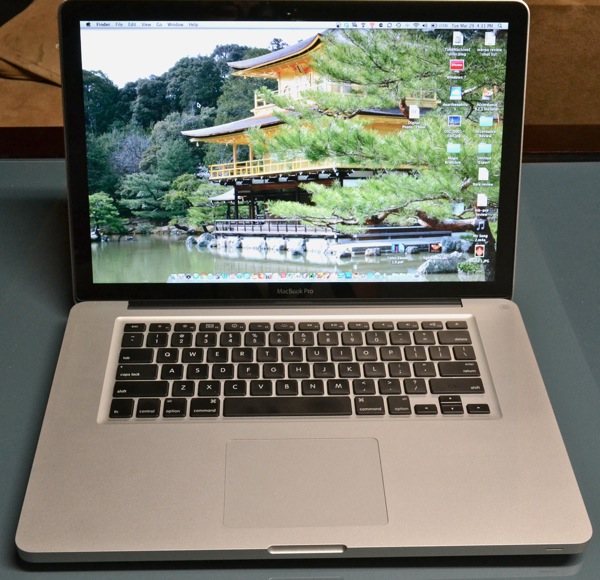

On all but the base model, the function keys were replaced with a touchscreen strip called the Touch Bar with a Touch ID sensor integrated into the power button.Ī November 2019 revision to the fourth-generation MacBook Pro introduced the Magic Keyboard, which uses a scissor-switch mechanism. The fourth-generation MacBook Pro, released in October 2016, adopted USB-C for all data ports and power and included a shallower "butterfly"-mechanism keyboard. It eliminated Ethernet and FireWire ports and the optical drive. It is thinner than its predecessor, made solid-state storage (SSD) standard, added HDMI, and included a high-resolution Retina display. The third-generation MacBook Pro was released in 2012: the 15-inch in June, a 13-inch model in October. Updates brought Intel Core i5 and i7 processors and introduced Intel's Thunderbolt. Called the "unibody" model because its case was machined from a single piece of aluminum, it had a thinner flush display, a redesigned trackpad whose entire surface consisted of a single clickable button, and a redesigned keyboard. The second-generation model debuted in October 2008 in 13- and 15-inch variants, with a 17-inch variant added in January 2009. Later revisions added Intel Core 2 Duo processors and LED-backlit displays. The 15-inch model was introduced in January 2006 the 17-inch model in April. The first-generation MacBook Pro used the design of the PowerBook G4, but replaced the PowerPC G4 chips with Intel Core processors, added a webcam, and introduced the MagSafe power connector. It is currently sold with 13-inch, 14-inch, and 16-inch screens, all using variants of the Apple-designed M1 system on a chip.

Introduced in January 2006, it is the higher-end model of the MacBook family, sitting above the consumer-focused MacBook Air. The display rating remains more or less the same, since the device tested by us showed a noticeably reduced illumination compared to the device we tested with a reflective display.The MacBook Pro is a line of Macintosh notebook computers by by Apple Inc. Thanks to the weight of 2.9 kilograms, and the flat shape of the case, the mobile use of the DTR notebook is definitely possible. This allows for tireless use in bright surroundings, and also the use outdoors is noticeably more pleasant. The 50 Euros for the anti-glare version of the display can be recommended for all users. The performance advantage is therefore only noticeable in rare cases. In XBench the improvement in performance is dulled by the more general score of the benchmark. Also the graphics performance of the integrated Intel graphics is improved by the larger cache memory. 3-11% improved performance was determined by us using the synthetic benchmarks. The 250 Euros additional cost for the faster processor will only be worth it for very few users. With an entry price of 2799 Euros, the version tested by us is definitely not a bargain. 3D Printing, 5G, Accessory, AI, Alder Lake, AMD, Android, Apple, ARM, Audio, Benchmark, Biotech, Business, Camera, Cannon Lake, Cezanne (Zen 3), Charts, Chinese Tech, Chromebook, Coffee Lake, Comet Lake, Console, Convertible / 2-in-1, Cryptocurrency, Cyberlaw, Deal, Desktop, E-Mobility, Education, Exclusive, Fail, Foldable, Gadget, Galaxy Note, Galaxy S, Gamecheck, Gaming, Geforce, Google Pixel, GPU, How To, Ice Lake, Intel, Intel Evo, Internet of Things (IoT), iOS, iPad, iPad Pro, iPhone, Jasper Lake, Lakefield, Laptop, Launch, Leaks / Rumors, Linux / Unix, List, Lucienne (Zen 2), MacBook, Mini PC, Monitor, MSI, OnePlus, Opinion, Phablet, Radeon, Raptor Lake, Renoir, Review Snippet, Rocket Lake, Ryzen (Zen), Science, Security, Single-Board Computer (SBC), Smart Home, Smartphone, Smartwatch, Software, Storage, Tablet, ThinkPad, Thunderbolt, Tiger Lake, Touchscreen, Ultrabook, Virtual Reality (VR) / Augmented Reality (AR), Wearable, Wi-Fi 7, Windows, Workstation, XPS, Zen 3 (Vermeer), Zen 4


 0 kommentar(er)
0 kommentar(er)
